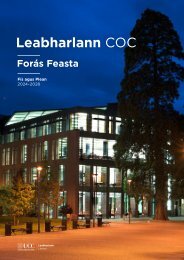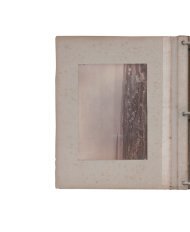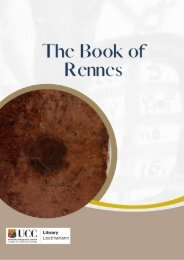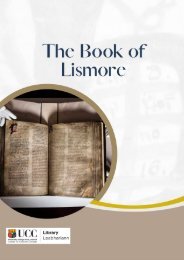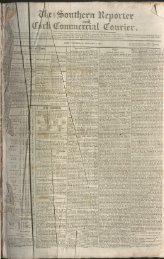Lead Toxicity in Mute Swans
LEAD TOXICITY IN MUTE SWANS Cygnus olor (Gmelin). By JOHN O'HALLORAN A thesis submitted to the National University of Ireland in candidature for the degree of Doctor of Philosophy September 1987
LEAD TOXICITY IN MUTE SWANS
Cygnus olor (Gmelin).
By
JOHN O'HALLORAN
A thesis submitted to the National University of Ireland
in candidature for the degree of Doctor of Philosophy
September 1987
Create successful ePaper yourself
Turn your PDF publications into a flip-book with our unique Google optimized e-Paper software.
human pool was used to account for the matrix effect of blood; pooled<br />
swan blood was not used because it gave excessively high read<strong>in</strong>gs.<br />
<strong>Lead</strong> estimations were carried out on a PYE Unicam SP192 atomic<br />
absorption spectrophotometer with a flameless atomiser attachment, and<br />
at a wavelength of 217nm.<br />
Estimations were carried out at least twice.<br />
If the range of duplicates exceeded 10% of the mean, further aliquots<br />
were analysed.<br />
Appropriate dilutions were made if specimen values<br />
exceeded those of the standards.<br />
<strong>Lead</strong> concentrations were calculated by<br />
read<strong>in</strong>g directly from a standard curve or calculated us<strong>in</strong>g the<br />
regression equation from the l<strong>in</strong>e of best fit.<br />
Control specimens of human blood (from Guilford, U.K.), with known<br />
consensus mean values, were run every third swan specimen to ensure<br />
stability of the <strong>in</strong>strument.<br />
Haemoglob<strong>in</strong> analyses.<br />
Haemoglob<strong>in</strong> concentration and haematocrit (packed cell volume) were<br />
estimated for all blood samples.<br />
Haemoglob<strong>in</strong> concentration was<br />
estimated by convert<strong>in</strong>g all haem species to alkal<strong>in</strong>e haemat<strong>in</strong> us<strong>in</strong>g a<br />
non-ionic detergent.<br />
20ul of fresh, well mixed whole blood was added to<br />
3ml of a solution of 25g sc<strong>in</strong>tillation grade Triton X 100 <strong>in</strong> 1 litre of<br />
0.1 molar NaOH (see O'Halloran et al., 1987b). Three replicates were<br />
made and read <strong>in</strong> a spectrophotometer at 575nm.<br />
The haemoglob<strong>in</strong><br />
concentration was calculated from a standard curve, prepared from pure<br />
alkal<strong>in</strong>e haemat<strong>in</strong> (99% pure from Serva, Heidelberg, FRG).<br />
Packed cell<br />
volume was estimated by sp<strong>in</strong>n<strong>in</strong>g three replicates of each sample <strong>in</strong> a<br />
Hawksley microcentrifuge at 12,000 x g (determ<strong>in</strong>ed stroboscopically) for<br />
30 m<strong>in</strong>s and values of haematocrit calculated.<br />
- 20 -<br />
i<br />
r




